Did you know that the D&D 5th Edition core rulebooks don’t include an example of a keyed dungeon map?
This is because D&D no longer teaches you how to prep or run a dungeon.
This is a wild thing to think about, and it actually gets weirder the more you think about it. Back in 2020, in Whither the Dungeon?, I pointed out that this had created an entire generation of Dungeon Masters who had, paradoxically, never learned how to master a dungeon. Even the oral traditions which had once passed this knowledge from one DM to another were breaking down, partly because this was actually the end point of a long-term trendline (the dungeon instruction in D&D 4th Edition, 3rd Edition, and even 2nd Edition had grown increasingly anemic) and partly because of the huge influx of new gamers via channels other than playing in someone else’s game over the past decade.
By the end of the 2010s, you could already see the effects of this manifesting in DMs Guild and other third-party adventures: An ever larger number of dungeon adventures were being published without numbered maps; the contents of those dungeons described in haphazard paragraphs which were often little more than a rambling stream of consciousness.
This was bad in its own right, but this degradation of published books was only a reflection of an even deeper rot at casual gaming tables – a malaise invisible to those afflicted, because they didn’t even know what they were missing.
Then, in 2023, Wizards of the Coast published The Shattered Obelisk. As noted in my review, this campaign book included multiple unkeyed dungeons. This, in my opinion, was a red alert: It wasn’t just that Wizards was neglecting to teach basic dungeon design; it appeared that the design team itself was losing the institutional knowledge to design dungeon adventures. (The call was coming from inside the house!)
But maybe this was just a fluke, right?
In 2024, the new Dungeon Master’s Guide was released. Like the 2014 Dungeon Master’s Giude, it failed to include even an example of a keyed dungeon map, let alone any sort of actual instruction in keying a dungeon map or running dungeon adventures. Except it was even wore than that: The new DMG included multiple sample adventures for new DMs, including three dungeon adventures… none of which were keyed: One just said “there are some monsters in there.” Another tried to vaguely describe through words where each encounter was located on the map (e.g., “in a sidecave to the southeast” or “at the north end of the stream”). A third tried to use a broken method of random encounter checks.
So where the 2014 DMG simply neglected to teach new DMs how dungeons work, the 2024 DMG escalated to only showing examples of exactly how you should not design a dungeon. This, in my opinion, was now a five-alarm fire.
All of which brings us, in 2025, to Borderlands Quest: Goblin Trouble, one of the first official adventures for 2024 D&D, released as introductory adventure to promote the upcoming Starter Set: Heroes of the Borderlands.
It’s a dungeon adventure.
It’s unkeyed.
Something is rotten in the state of D&D.
WHERE, OH WHERE IS THIS ROOM?
At this point, many reading this might be thinking, “Well, so what? What’s the big deal?”
To understand the problem, let’s take a peek at what happens when you try to actually run Goblin Trouble, starting with the PCs following some bandits and “enter[ing] the cave from the eastern edge of the map.” Checking the map, it’s pretty easy to figure out where this is:
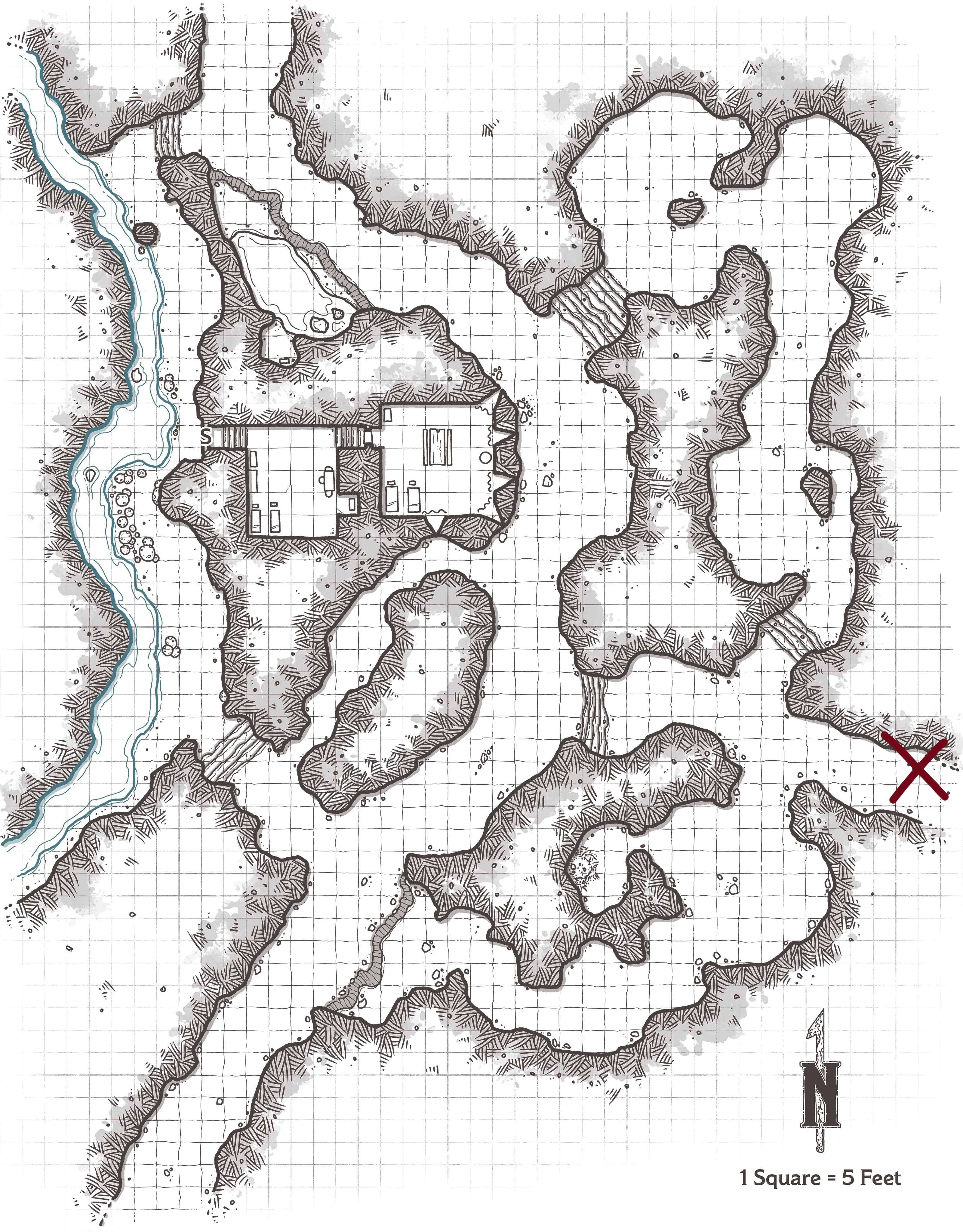
It will later turn out that the actual location being described is several hundred feet to the west, but we can let that slide. So far, so good!
But things quickly get more complicated:
From the cave entrance, a passage continues deeper beneath the hills and slopes downward. You travel for several minutes before the passage turns north and leads up a set of natural stone steps. A group of caverns continues out ahead of you.
The ceiling of these caverns is choked with webs, and the footprints you’ve been following continue through these caves. In the center of the floor in the first cave is a human-sized boot.
I’m fairly certain that this is what the boxed text is describing:
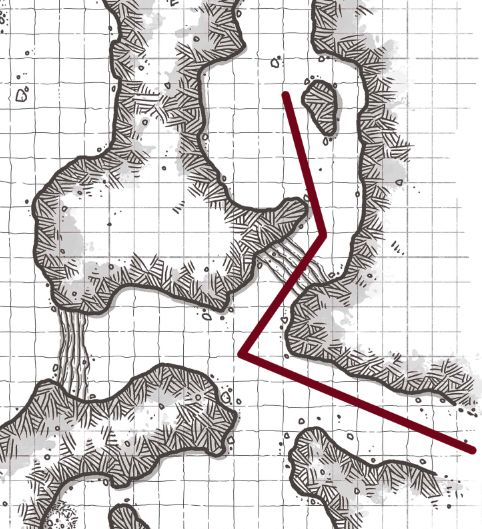
But, as you can see, the PCs have moved past a major intersection without the adventure even mentioning that it exists. This is quite strange, but let’s put a pin in that. We’ll come back to it later.
At this point, the adventure describes an encounter with some spider webs and dead spiders… but is this actually where this takes place? It’s unclear. When the PCs went up the stairs, north, and into/through a “group of caverns,” how far did they go exactly? How many caverns are we talking here?
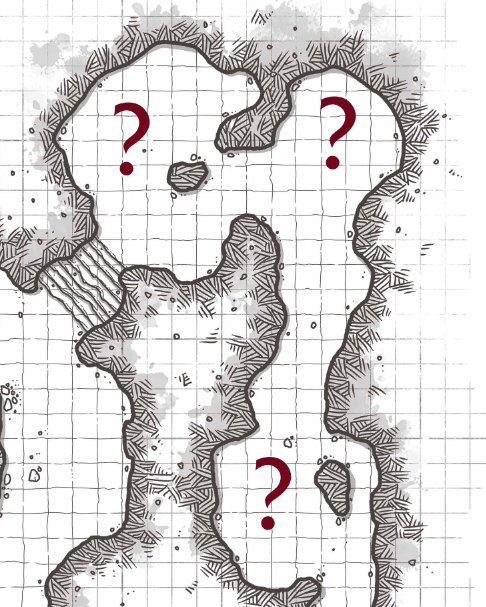
At first it seems like it could be any or all of these caves, but later, after the encounter with the dead spiders is described, we’re told that
The passage continues onwards, taking the characters north for a while, and then switching back south. The caves here are empty, save for some old cobwebs on the ceiling.
Eventually, the characters find themselves on the southeastern side of the map, near some steps that lead into a cavern with an underground stream flowing in it.
So the dead spiders must have been in the southern cave (so that the PCs could leave it going north). Furthermore, there’s only one cave on the southeastern side of the map, so that must mean that the PCs follow this path:
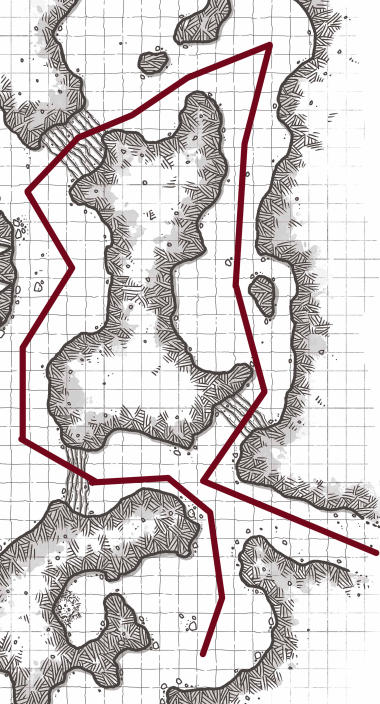
As we can see, the adventure is once again skipping past several more intersections and the PCs end up… in the cave immediately to the left of where they entered? That’s bizarre.
It turns out, though, that this must be a typo. This is supposed to be “near some stone steps that lead into a cavern with an underground stream flowing in it.” The stream is on the other side of the map, so they must mean one of these two locations:
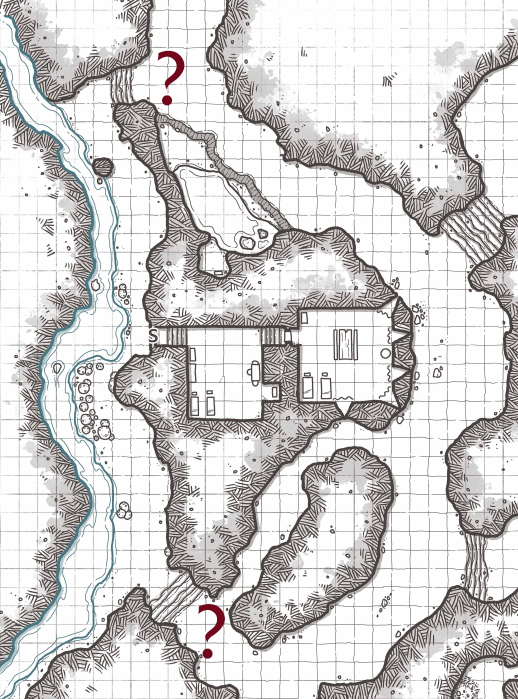
But which one?
I can guess, but there’s no way to actually know.
At this point we’re told that the bandits the PCs are following are “in the cavern ahead” and “trying to summon the courage to peek around the corner and see what the goblins are up to.” But what does this mean, exactly?
They must be somewhere in this area:
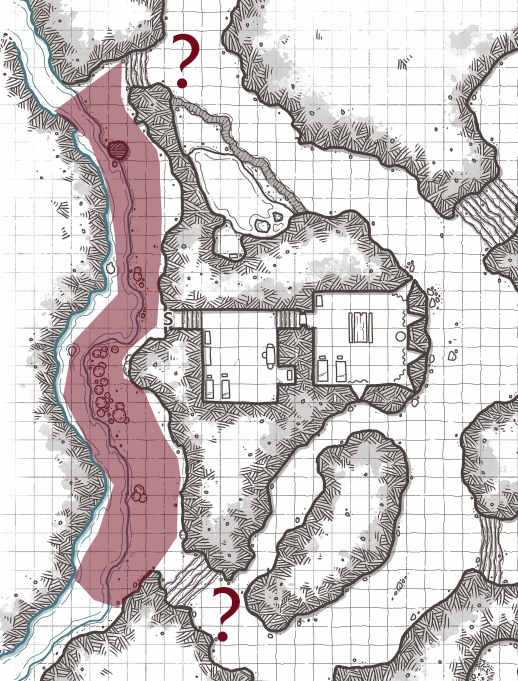
But where’s the corner they’re “peeking around”? Reading ahead, we can figure out that the goblins are hiding inside the secret lair, but the bandits don’t seem to know that. Nevertheless, maybe we can play this as “they look around the corner and are confused to discover a blank wall of stone.”
Okay, so “southeast” is probably a typo for “southwest.” And the “corner” must be that outcropping of rock, so the bandits must be standing at the X:
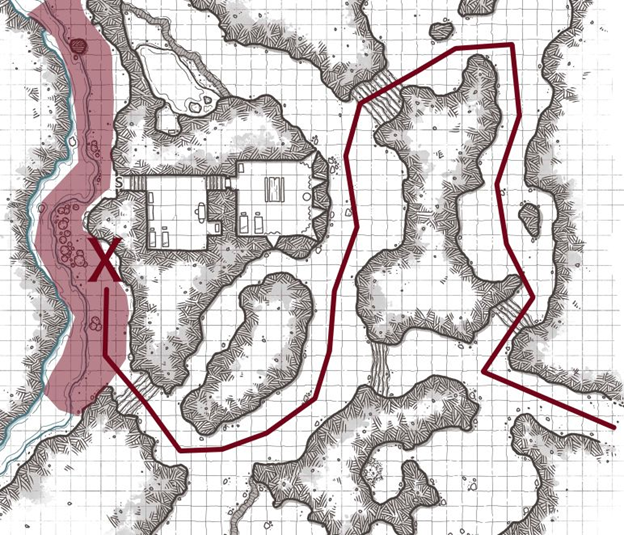
We also know the path the PCs must have taken (which is still bonkers, but let’s stick another pin in that!). We’ve figured it out!
Phew!
…
Just kidding. The bandits can’t be standing there, because several pages later we discover that the goblins have set up a trap in the mushroom patch. This is not, of course, keyed to the map. (Why would it be?) But if the bandits were there, they would have triggered it.
So where ARE the bandits supposed to be?
I have no idea! Good luck, first-time DMs!
CONSEQUENCES
It’s important to understand that this isn’t some fluke. This is what always happens when you try to describe the contents of a dungeon through rambling paragraphs instead of clearly indicating where things are located on the map.
If you think about it, this principle isn’t just limited to dungeon design. It’s a fundamental property of maps. Imagine, for example, if the maps app on your phone just displayed a bunch of unlabeled streets and said, “Turn left somewhere up ahead. I’m sure you’ll figure it out!”
And the problem here isn’t just that you’re being forced to solve a Where Is This Room? puzzle before you can run the adventure. The deeper problem is that, without a proper scenario structure, you’ll end up prepping the wrong stuff. And even if you prep the right stuff, it’ll be organized in ways that make it difficult or even impossible to use at the gaming table.
In truth, what usually happens is that the designer or GM will end up defaulting back to the only structure they have left: A railroad.
And that’s exactly what happens in Goblin Trouble.
The opening advice for the new DM (which is quite good, actually; check out Nerd Immersion’s video that takes a closer look at this) spends a good deal of time talking about the importance of player choice and how players should be driving the action of the adventure. But the very first thing the adventure says is that (a) there’s only one thing the players can do; (b) if they don’t, the DM should tell them what to do; and (c) if that also doesn’t work, the DM should then use their “power to change the world around them to spur them to action.”
Then, as we’ve seen, the rest of the adventure is forced onto a purely linear track: The players can only choose to go forward or backward. Despite a xandered dungeon map, the predetermined narrative simply shuffles them along a track that ignores all opportunities for choice or navigation.
THE KICKER
Goblin Trouble continues in this vein for a while, but then, right near the end, we find this:
The Forge. The makeshift forge in area 4a occupies the spot at the back of the second room.
Area 4a?
This means that, at some point, somebody actually keyed a map. And then somebody else decided to remove the map key and rewrite Goblin Trouble as a nearly incoherent linear railroad.
There’s some nice stuff in Goblin Trouble: The opening GM advice. The texture of the encounters. The roleplaying vs. combat opportunities set up with the bandits.
But it’s fatally sabotaged by a fundamental failure of basic scenario structure and adventure design. I find it particularly alarming that this appears to have been done to an adventure which initially didn’t have these problems, suggesting that there’s something systemically wrong with the development process for adventures at Wizards of the Coast.
It’s a “the call is coming from inside the house” moment and, in my opinion, bodes ill for future Wizards of the Coast adventures.
And, frankly, for the hobby.

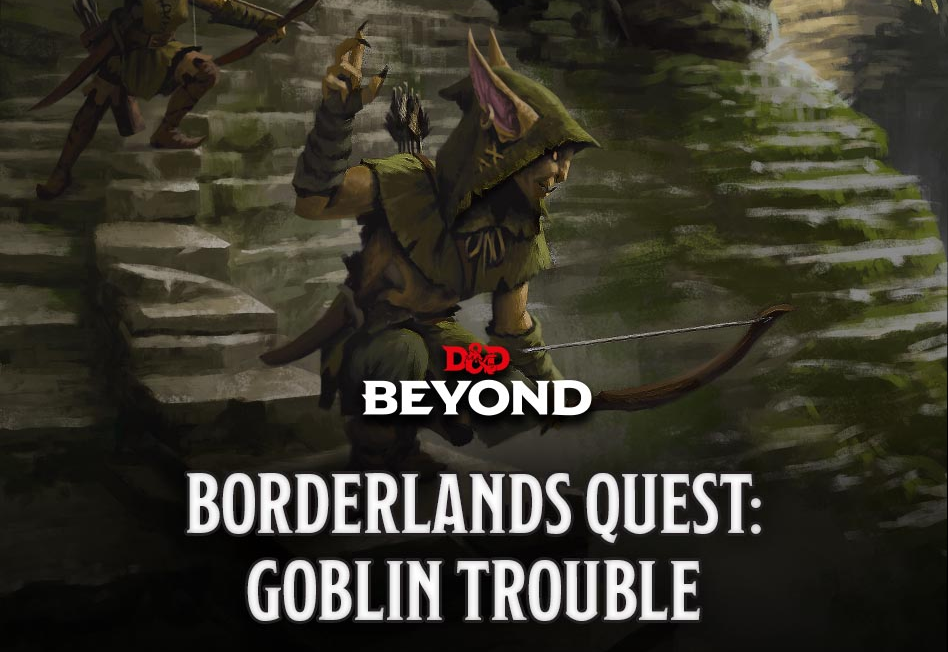








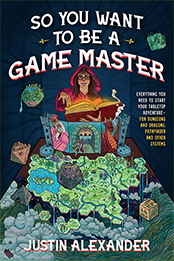
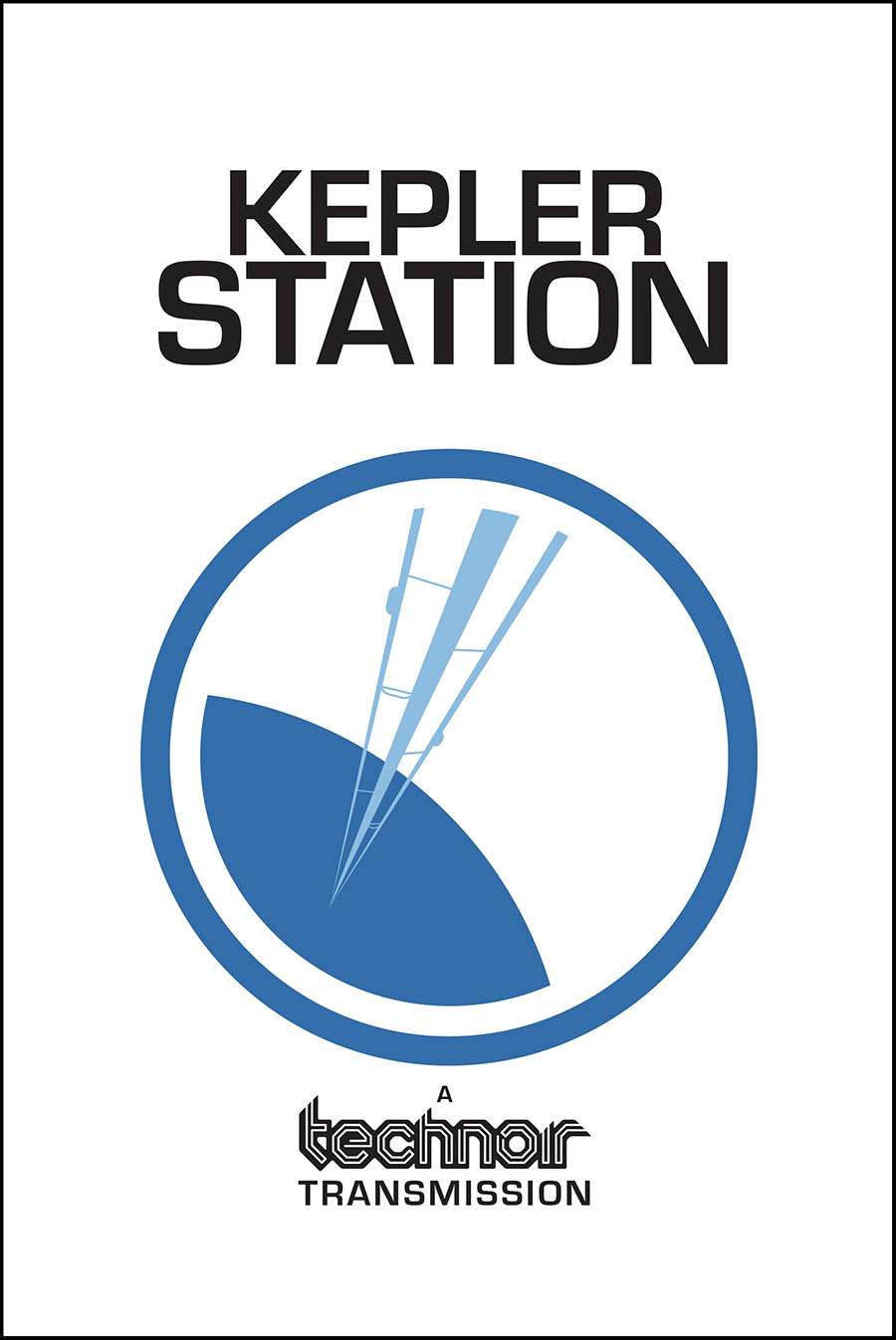


How this can be so escapes me. You buy a traveler’s guide to a city and the map is keyed. You make fantastic treasure maps or fantasy city maps as a kid, and you do a key.
It has to be a design decision, and I cannot fathom the logic behind it. Really!
Am I the only person who hated the ’80s cartoon?
I was heavily into D&D at the time. I remember excitement being built up for it in Dragon magazine, and was looking forward to it. But then it turned out to be complete crap.
The characters didn’t earn the abilities if their class, they just had a stupid magic item. The Dungeon Master was just another character. And Tiamat should’ve been wiping the floor with these stupid kids.
Le sigh
Your article, on the other hand, is as informative as ever.
This is worse than the average D&D adventure. LMoP’s Wave Echo Cave is keyed up to 20. Even the Uni and the Hunt for the Lost Horn adventure is keyed.
What the hell is going on with this map…It’s literally identical to the “Player Version” whose whole point is to be an unkeyed copy.
I had the same trouble understanding the cave layout. Phandlever and below had this problem but to a lesser impact, in my opinion, but this is bad.
While reading the adventure I remember the map is from Dyson Logos, so they didn’t do the map for the adventure and then drew a map, they got a map and fitted and adventure on top of it. Or maybe they had a map but someone decided it was better/cheaper to use on of Dyson Logos’ as they already look good. I wonder if there is a legal reason that prevents them from publishing a modified version of the map and that’s why they didn’t add a key.
@Brent: The player version removes the S for secret door, allowing the map to be loaded into a VTT without spoilers.
I wish publishers would label these as VTT maps. A player map, IMO, should not include secret areas at all.
I reached out to Shawn Merwin about the map issue via Bluesky.
I said I could not figure it out so I asked if there was a typo.
He replied and said
“I’ve not read the released version because of an impending deadline I can’t miss, but it’s definitely different than my submitted draft. I used a modified version of the “included” map, that has one path starting in the east, then going north, east, south through the center, then east again.”
The notion of a map with branching paths having adventure text that says “and then the players go here” is absolutely wild. I cannot fathom the thought process for writing this module.
@Cade. That sounds like a very chaotic workplace – some editor has heard of the idea that dungeons should be branched not linear and still included the railroaded real-aloud.
What would dungeon crawl procedures for D&D 2024 (or whatever recent version) of D&D look like? I’ve been trying to go through older games (D&D, T&T, EotPT, Traveller, TFT, Runequest, so on) to see what their overall procedures for running games at the table were, and, aside from Basic D&D and arguably T&T (EotPT copied original D&D wholesale here), they were kind of all over the place and hard to piece together. Is the lack of GM procedures spelled out in early games contributing to the railroad becoming the only method now?
If you’re not going to write a “how to key a dungeon map” book yourself, do you or anyone else have a source you recommend?
@Savage Wombat
@Charles Saeger
I am not just saying this because this is Justin’s blog, but I would refer you both to his book “So You Want to Be A Game Master.” (In fact, I found Justin through the book, if that makes sense.) He gives solid, solid instruction on both of your questions. It is the best source for teaching Dungeon Mastering I’ve seen. I’ve read it and I’ve gifted it to 3 young aspiring GMs.
@Cade: I’ve browsed it; I don’t run D&D after 3e so it’s not too relevant to me. I’m far more interested in the history and how to use it going forward, a guide so we can craft our own procedures, more like the hex crawl and urban crawl series.
@Savage Wombat: To echo Cade, So You Want to Be a Game Master is definitely the book you’re looking for.
(If I do say so myself.)
I will also likely also have a Dungeons 101 video on Youtube soon-ish. So keep an eye peeled for that.
@Justin Alexander
While we’re talking about dungeons, is there a certain preferred method of asking you questions for consideration in Ask the Alexandrian? Comment section, email, etc?
Why is this happening? Perhaps because lots of people don’t like to read maps. I recently used Apple Maps for a road trip in an unfamiliar area, and the default mode was not an overhead map (still available) but a car eye’s view of the route, with a voice telling you where and when to turn. Just follow directions, no map reading needed. The descriptions of the adventure sound like this approach–directions not maps. I agree this is terrible, but lots of people hate reading maps.
@Charles Saeger
Giving you a procedure for Hex crawls and urban crawls? I bet Justin wrote about it. In fact, Would you believe chapter 4 is 50 pages over Urban adventures and Part 5 is 75 pages over wilderness hex crawling?
Seriously, it’s a treasure for system agnostic game mastering.
@TRay: A lot of people hate cooking. I would suggest that those people should not be writing cookbooks.
I know that Dyson Logos can and does create excellent keyed maps, and Shawn Merwin can and does write good adventures rather than this railroad-y mess, so I can only assume that changes were made after the latter had submitted his draft. And that the person who made the changes likely did not bother to include a keyed map, thinking that “eh, the unkeyed player map is good enough”. But this sloppiness is by now pretty typical of D&D5e products unfortunately. On the one hand – thanks for the free adventure, premade characters, and some art; on the other hand – if this is an indication as to the quality of the starter set, then this starter set will be a hard pass for me.
Not only is this “not keyed” it was UNkeyed on purpose. The oversight in removal evidenced by the “4a” remnant means some editorial decision was made that the key was a bad thing.
Maybe Merwin’s adventure was reworked to the point where the key didn’t match coupled with an editor too lazy or too ignorant to re-key it. Perhaps D&D has decided that keys are a grognard design relic with no place in a modern, vtt-forward format.
Either way, it’s a devolution in approach and subsequent quality; a key can only help.
My theory is that WotC has been infiltrated and captured by a coven of arithmophobes.
I would say Metzer’s Mahenta Box Basic Set with B2- Keep on the Borderlands is still the gold standard for learning how to build a map, create and key your own dungeon. Or at least was up until Jason’s work. I still go back to it to remember why I fell in love with the hobby. It made me want to create dungeons and plan adventures.
There’s a lot of meta-conversation in the hobby that positions game prep (which is really game design) as a chore to be minimized (see Sly Flourish or even some of the articles on this site). But drawing maps of fantastic places and imagining what it would be like to traverse them and how it might work in a given game is hella fun (or should be—also a big part of why I keep coming back to this site which shares so many tips for doing so). That to me is the real missed opportunity of these intro adventures and the “grab someone else’s map (and plot) and go” rubrik of GMing.
I have two theories about this (so far):
Theory One: Specific Feedback
When they give people keyed maps, they might get a certain amount of feedback that the cross-referencing involved in using the key is unfamiliar and cumbersome. When they give un-keyed maps, they get feedback that people were confused, but the number of people who blame the lack of a key might be smaller than the number who call the key difficult when it exists.
Theory Two: Ease of Editing
It takes time to send something back to the original author for changes, and you have less control, so they probably want to make at least some of their own changes after the author is out of the picture, based on layout issues, playtest feedback, brand/sensitivity stuff, and their own whims. If you edit something with a key, you might have to re-do the key, or at least part of it, especially for map layout or actual scenario changes.
And the company makes other types of games, so they might have writers, editors, graphic designers, etc. who work generally across games and aren’t expected to develop specific skills for individual types of games, like re-keying maps when something changes.
It’s so sad to see this! A good dungeon map is worth its weight in gold, and it just doesn’t work without a proper key. I was recentky reading through an old Dark Heresy adventure that had this problem: gorgeous map, location descriptions in text, but no idea where those locations are on the map! Sometimes you can figure it out, but why in earth out that unnecessary burden on the poor GM?
(My guess is that it streamlines the process of producing the book, since the editor doesn’t have to cross reference the area locations to the map.)
Relatedly I recentky did a blog post on why maps are so important in RPGs: https://illmetbymorrslieb.wordpress.com/2025/03/13/why-i-like-maps/
Is the map in this article the only map in the entire adventure? Or does it continue where the posted map ends?
I might be reaching a bit here, but maybe they removed the key to remove the free-form exploration (as the post points out), but a nice secondary effect was that nobody could wander off the map so the poor DM won’t have to improvise (whcih they’re doing anyway). I just hope everybody hates this dungeoncrawl and they don’t make this a standard.
The same thing happened with advice on worldbuilding. I see these young folks coming up with “new” methods of doing it on Reddit and whatnot. I want to tell them, this has all been thought out already by some very smart people. Worldbuilder’s Guidbook. Gygax himself wrote some good books on system agnostic worldbuilding after he left DnD. Then 3e cityscape…I still use that.
Here is a (maybe overly) pessimistic theory as to why they give no advice these days on how to build worlds or dungeons and apparently made the conscious choice to remove the key: How does helping people to create these things themselves profit them in any way? People who can build their own worlds and dungeons have less need to buy what they’re selling.
I’m not buying an effing book with no starter dungeon. That is no longer the same game. That’s it. I’m drawing a line.
To whatever extent they can publish adventures that don’t teach you how to make your own, I absolutely agree they will do it. But (a) published adventures with multiple pages of backstory and narrative room keys are already a bad example for personal prep, and (b) this is like selling a car with no steering wheel so that you can’t learn how to make your own car that works.
But personally, I’m most offended that the map has arrow slits and the PCs walk in front of them and apparently everybody just ignores them.
Okay. I’m actually someone who isn’t a fan of keyed maps, but boy does this look like a horrible mess.
(I feel that they limit the villains to remaining static in the locations designated for encounters. I can name at least three other ways to set up a dungeon other than a keyed map.)
Thanks for another awsome article
Alexander Atoz
Just found that the module includes the possibly-telling text “The map used for the cave is called “Underdark Warren” and is also found in the 2024 Dungeon Master’s Guide. Each section below mentions where on the map the various encounters are found. Additional areas on the map not referenced are not used for this adventure.” Which to me provides an explanation for why they might have changed the map midflight, when someone decided to reuse an asset instead of commissioning a custom map for the specific module. It might even be justifiable if they did it more competently.
@Alexander atoz: Key locations, not NPCs.
Did someone feed the map into ChatGPT with the prompt to write a scenario around it?
These comments hold a quite a few well-speculated, plausible reasons as to WHY these creators have made what is nonetheless an utterly inept and indefensible design decision. I must admit I’m a little bemused at the reaction, I wouldn’t have thought it was particularly relevant why they did it. Even Justin laments that this “bodes ill for the hobby” – I was not aware that WotC was in any serious sense the custodian of the hobby.
Responding to your comment saying “@Alexander atoz: Key locations, not NPCs.”
100% agree. My point was that I have yet to see a published map that actually does key locations, not NPCs. It’s left me inclined to minimize keying, and prepare a list of potential encounters instead.
(Which is probably close to the approach you’d recommend, come to think of if.)
@colir r
Regarding that adventure, the asset re-use in the 2024 DMG text partially reads:
“Use the Underdark Warren map in Appendix B for the corrupted cave. Ignore the secret door and the inner chambers behind it. Close off the tunnels leading off the map to the south, east, and north. The characters enter the cave in the southeast, following the stream. The cave’s main features and inhabitants are as follows” and then describes inhabitants and locations.
So the sample adventure in the DMG ignores a little over half the map (it only uses the stream and the one small cave in the actual southeast) and then uses “southeast” to refer to both the southeast cave and the southwest stream entrance (despite, presumably, the map having a compass on it). There isn’t another adventure in the same section of the 2024 DMG referencing the unused portions of the map. There’s an argument for “Here’s an unkeyed map so you can use it as you want,” but personally I don’t find a compelling one for the “left and right are both the east side of the map” part.
The map in that book is a color version of the same map and the compass looks different, but those are the only notable differences. Player vs Actual versions literally only have the “S” marking the secret door as the difference.
@Stern You say: ” I was not aware that WotC was in any serious sense the custodian of the hobby.”. Well they are not custodians, but they are the most popular way of playing an RPG in most places in the world and by that, the biggest entry way for the hobbie.
In that reggard a lot of new players learn theyr basics by playing D&D, if they don’t work to teach theese player would have a hard time with some play styles. In the case of railroading they are picking a play style that I (personally) think go against the TTRPG spirit, wich is being more sanbox and focused on player action.
Imagine that youre a new player who grew with products like Goblin Trouble and then try to DM a OSR adventure. Hell even a Cyberpunk adventure has keyed locations on its maps, and is completely different from D&D.
So yeah, they are not custodians, but they are coaches. If you ever had practiced sports in a more serious way, you know how much difference good coaches do for player develepment and every edition seem that WotC coaches are getting worse.